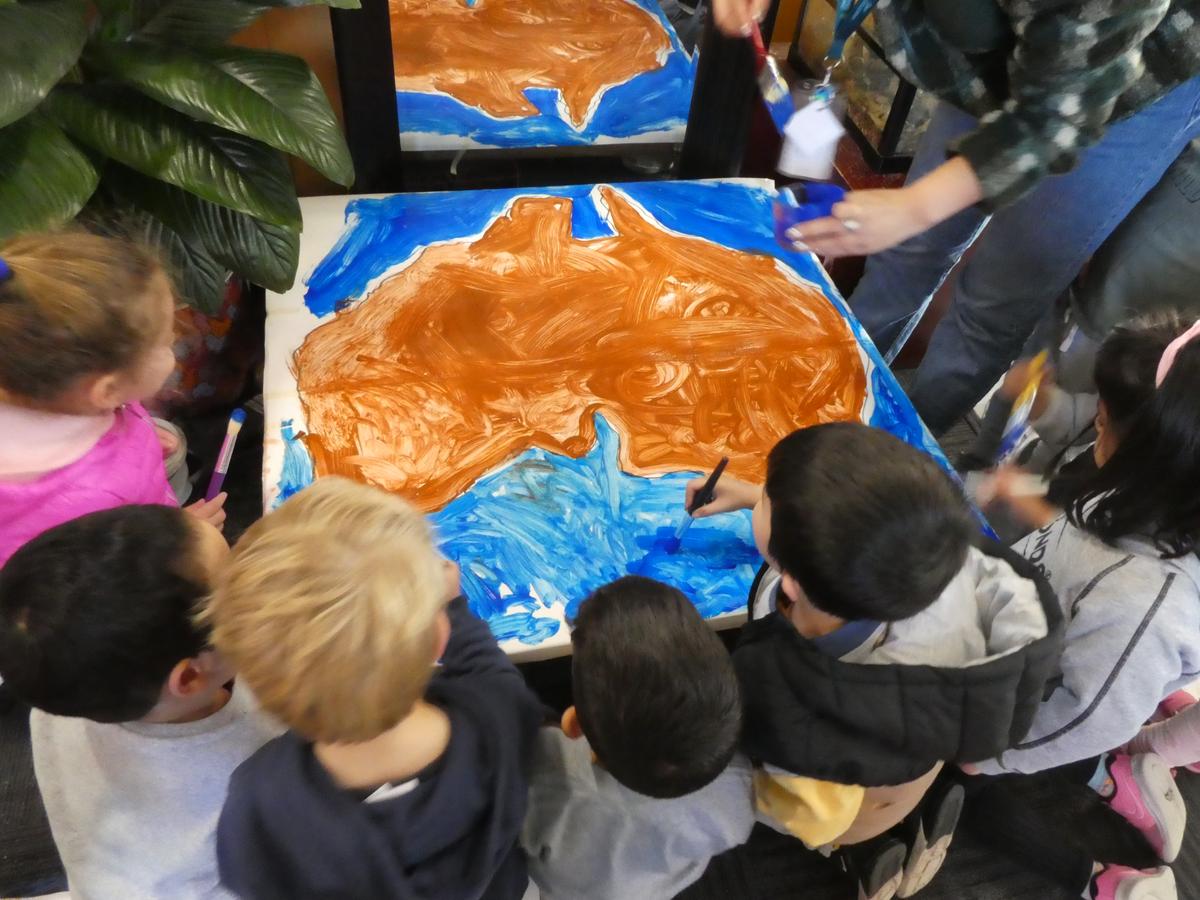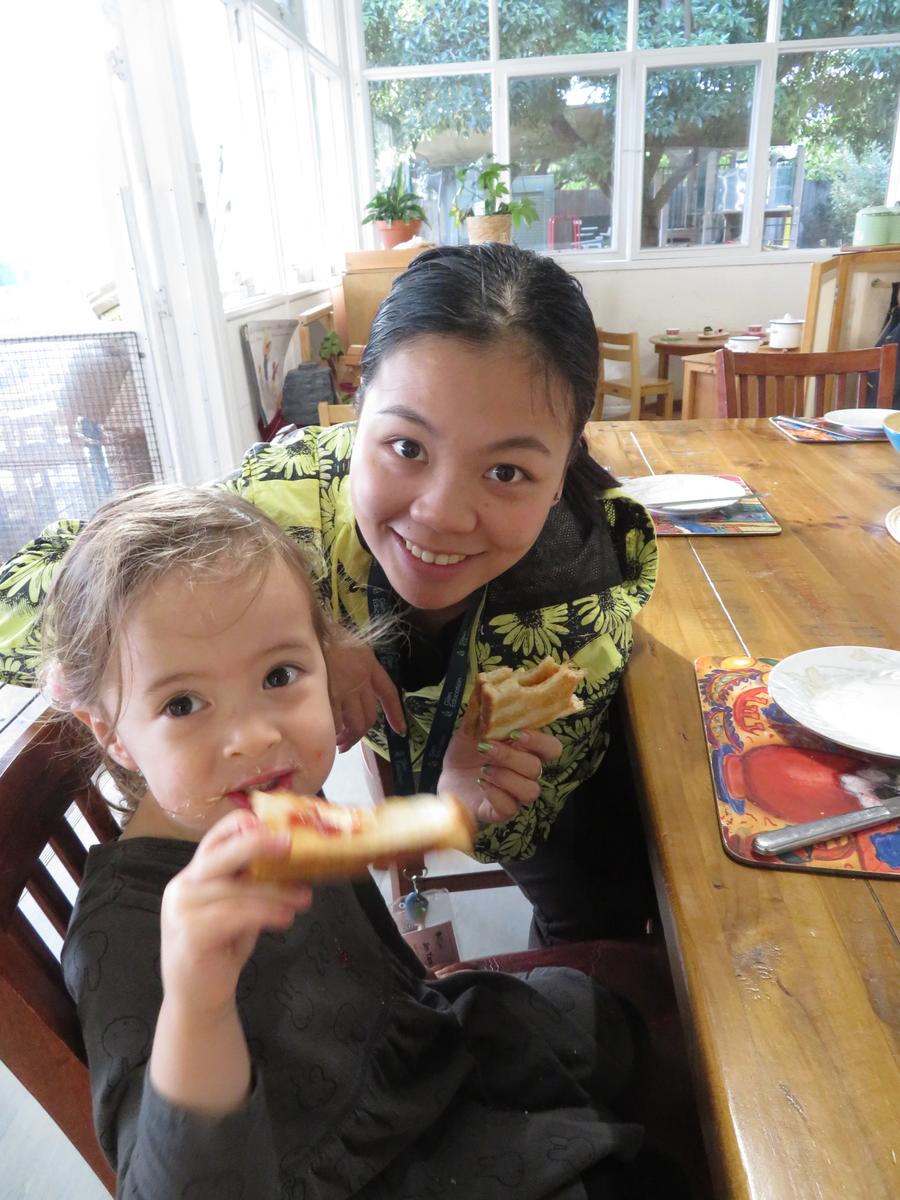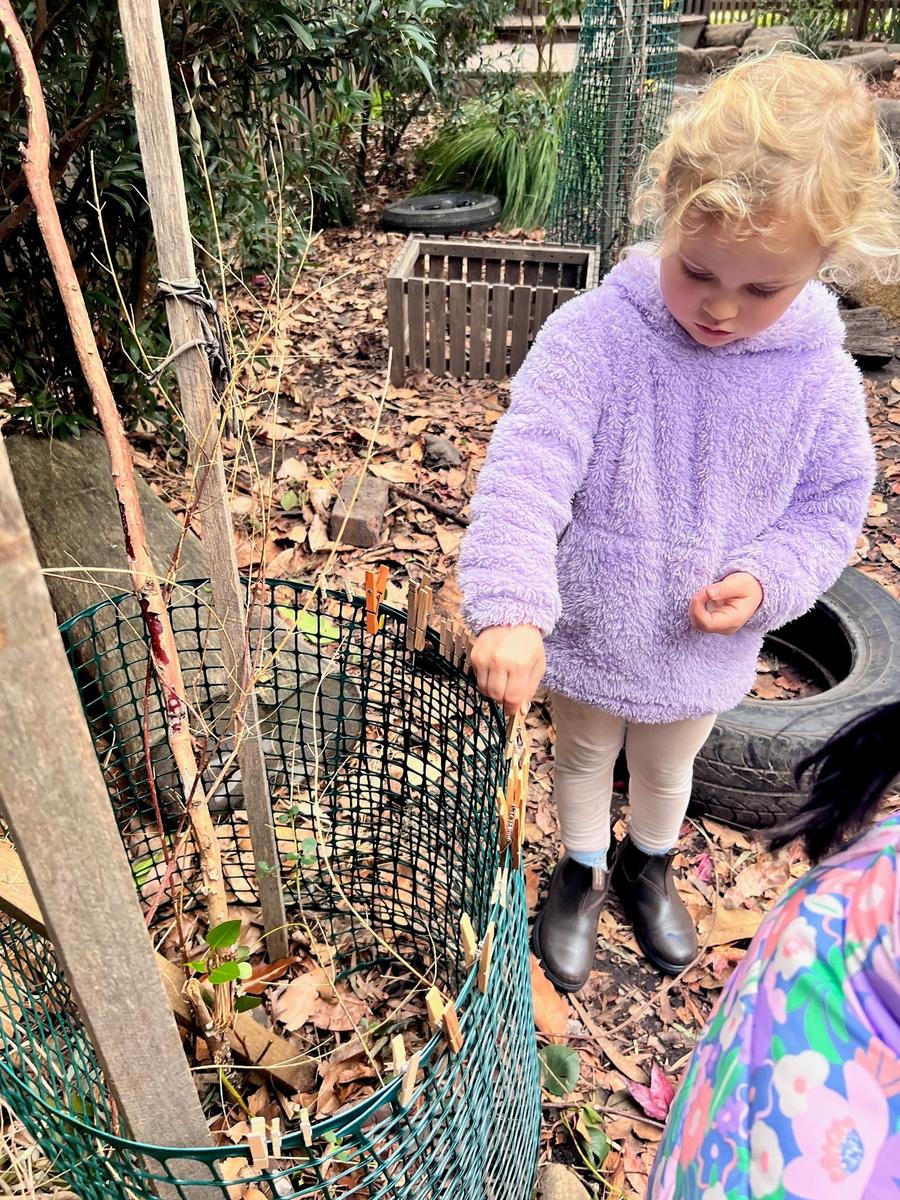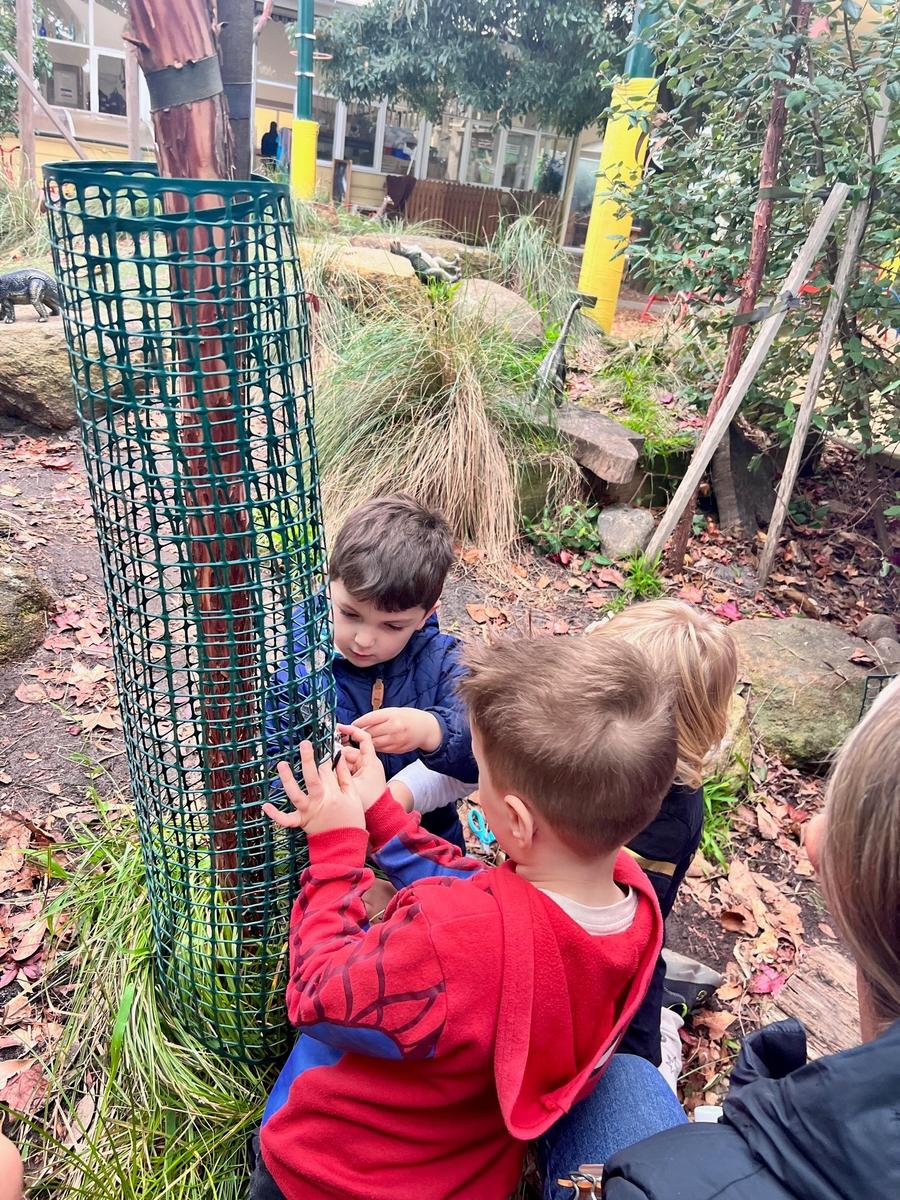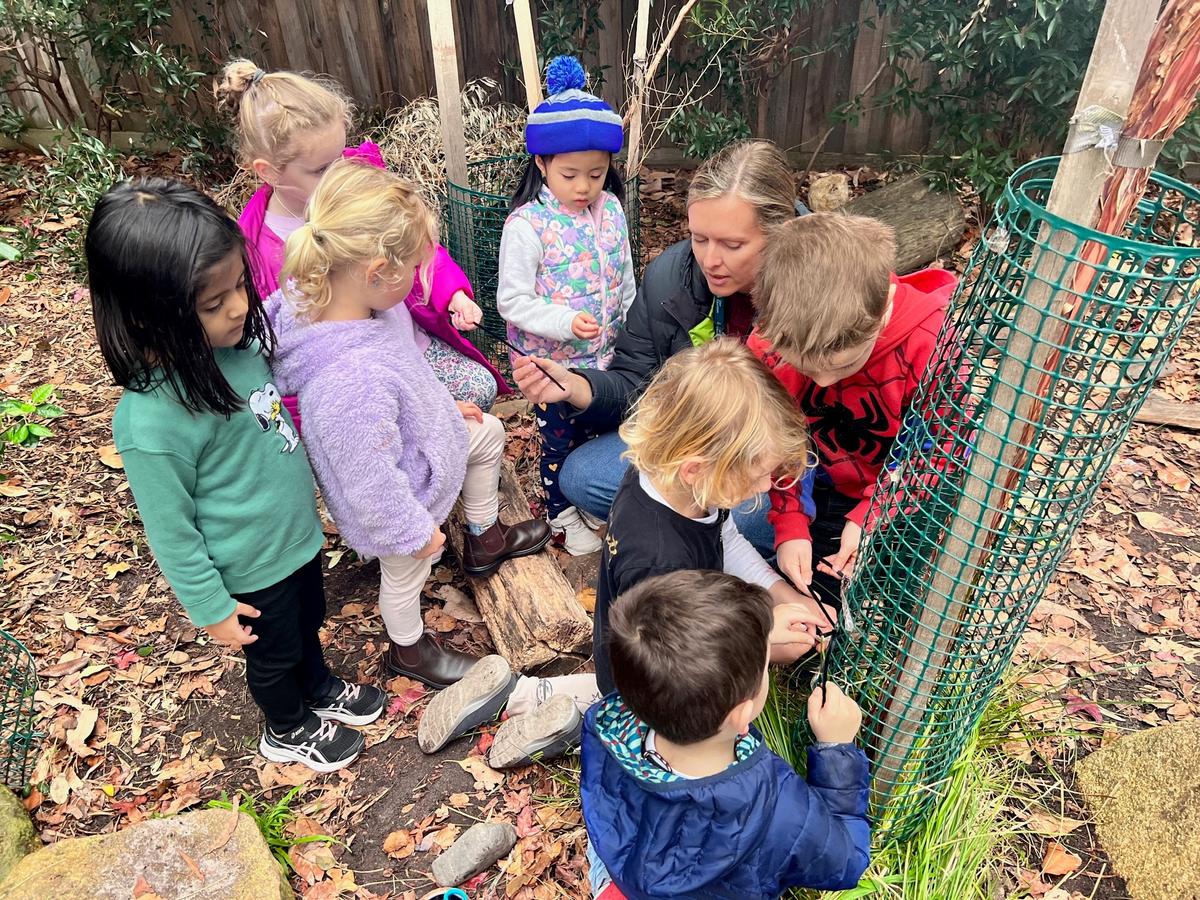Glen Education Glover Street
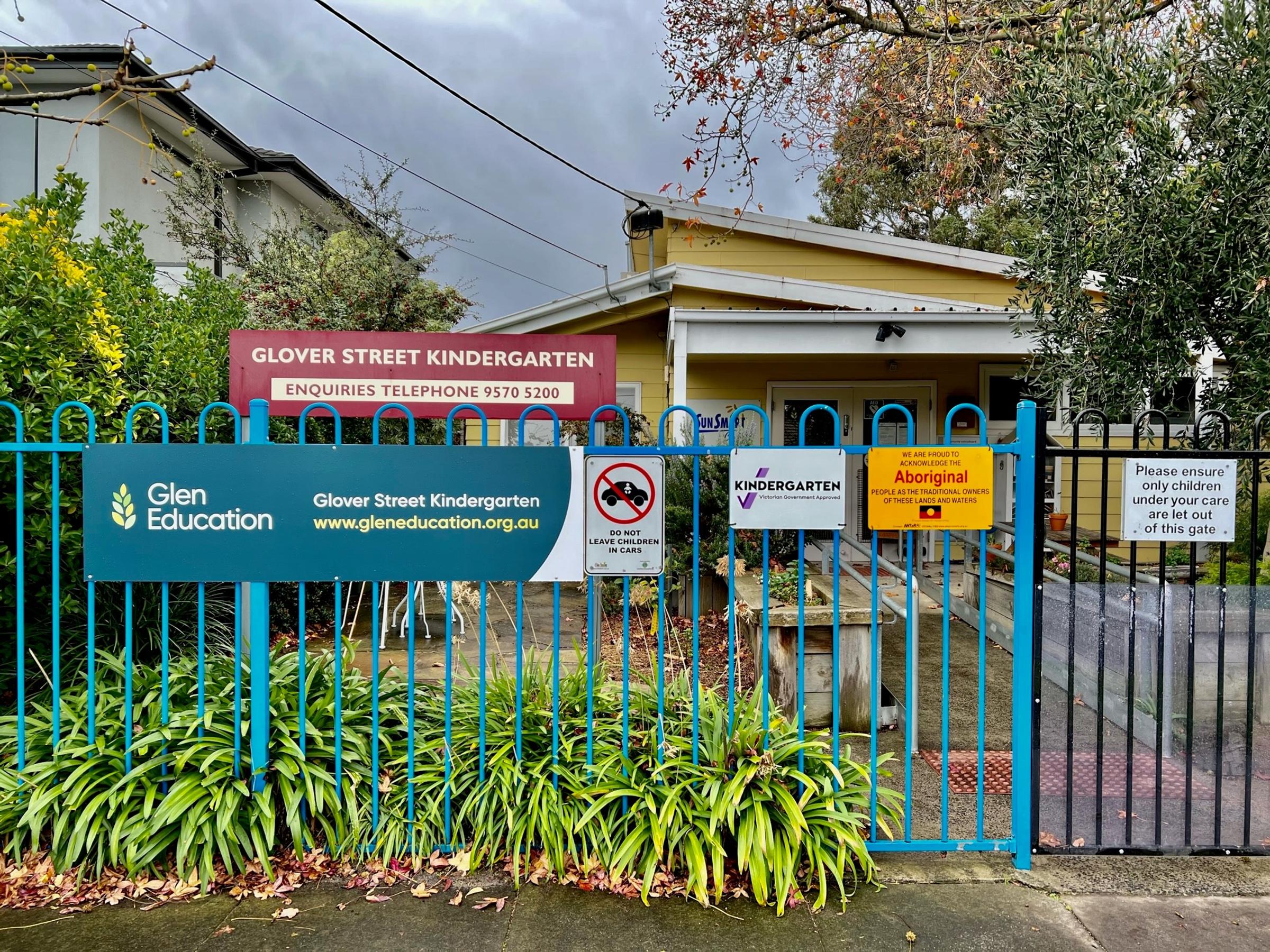
Supporting Independence and Agency in Children's Learning
Glen Glover Street Kindergarten Educators
Quality Area 1: Educational program and practice
At Glen Glover Street Kindergarten, we believe that the practice of daily Acknowledgment of Country is a vital way to demonstrate respect for the Traditional Owners of the land our kindergarten stands on. This practice is not only for Aboriginal and Torres Strait Islander people but can also be embraced by non-Indigenous individuals who have connections to other places. By engaging in this practice, we encourage children to embrace diversity and foster respect as responsible citizens.
To further enrich our educational program, we have incorporated Auslan, the Australian Sign Language, into our Aboriginal curriculum. As part of this, we have developed a special version of the Acknowledgment of Country in Auslan. Each day, during our group time, we engage in this practice using our hands. The children thoroughly enjoy learning new Auslan words, whilst simultaneously building their understanding of Indigenous culture.
Within our classroom, we have created an environment that reflects and respects Indigenous culture. We have set up an Indigenous-themed Australian map, complete with Aboriginal Dolls, sand, stones, Australian animals, and traditional Indigenous musical instruments and tools like the Didgeridoo and Boomerang. These items are accompanied by books, which serve as a table-top activity that facilitates discussions about Indigenous culture. Through imaginative play with dolls and animals, as well as reading Dream Time stories, we strive to foster a deep appreciation and knowledge of Indigenous culture among the children.
Special occasions, such as NAIDOC Week, provide us with an excellent opportunity to celebrate Indigenous culture together as a community. This year, we will be commemorating NAIDOC Week with a "Wear it Yellow" event, in which we will encourage everyone to wear something yellow and participate in a fundraising effort for the First Nations organisation - Children's Ground. We actively promote the involvement of our families and the wider community, inviting them to join us in wearing yellow and contributing a gold coin donation for Children's Ground.
By incorporating these practices and activities into our daily routine, Glen Glover Street Kindergarten adheres to NQS Standard 1, which emphasises the importance of creating a respectful and inclusive environment for all. We remain committed to nurturing a sense of belonging, fostering inclusion, and promoting cultural diversity as fundamental aspects of our educational program.
- Jin Yan, Early Childhood Teacher
Quality Area 2: Children’s health and safety
At Glen Glover Street Kindergarten, we only have three rules for children: Be safe, be kind and be responsible, which links to Early Years Learning Framework Outcome 1- Safety, 2 - Responsibility &3 Emotional well-being, and reflects the National Quality Standard 2 – children’s health and safety.
Engaging with the children and involving them in discussions about safety rules is an integral part of our approach. By empowering them to understand and follow the rules, we encourage their active participation in maintaining a safe environment. We work collaboratively with the children, allowing them to share their knowledge and perspectives on safety through open conversations. Below are some examples of children’s voices when we were discussing what it means to be safe, kind, and responsible while at kindergarten?
Be safe:
- Wear the gumboot when you play at the mud area and use the little shovel.
- No doing back flips when you jump.
- No climbing without holding the branch.
- We sit on our bottom and hold the strings tight (when on the swings).
- No standing in the front of swing when your friend is on the swing.
- No jumping on to other people.
Be kind:
- Share the toys with others and wait for turns.
- Be respectful of others bodies.
- Helping Mimi pick the leaves up and putting them in the green bin.
- When I play with my friend.
- Wait for your turn.
- Helping friend to pack up.
Be Responsible:
- Packing up toys.
- When we finish drawing, we put the lid on the texta and put it back where they are.
- When we have morning tea we sit and eat our food, then we can play.
- We pack up our lunch box and put it into our bag or our locker.
- When you finish your toast, we wash the dishes.
By implementing these measures and fostering a culture of safety, Glen Glover Street Kindergarten prioritizes the health and safety of every child. We commit to continuously exceeding National Quality Area 2 and improve our practices to provide the highest level of care and protection.
- Mimi Bouakhasith, Early Childhood Educator
National Quality Area 3: The physical environment
Glen Glover Street kindergarten prides itself in offering diverse play areas that stimulate children’s natural wonder and curiosity. One irresistible, to some, space is our beautifully designed “Mud Patch. With a wooden deck rest, a standing area and a much used water pump, all situated in a slated streamlet flowing down into a drain, all pique children’s physical engagement.
We believe our thoughtfully and intentionally designed outdoor learning area exceeds the standard indicated in the National Quality Area Three – the physical environment. Children are in a setting with beautifully established trees, small mounds of rich dark mud, sections of tree trunks, and a wealth of equipment to aid imaginative play! This includes but is not limited to building a small city, filling old motor vehicle tyres with dirt, and finding the natural engineers of the natural world – the humble and hardworking earthworms!
What is this mud all about you ask? Why in the 21st century should we be looking deeper into its attributes and benefits particularly in the early childhood environment?
These sensory filled outdoor experiences have been the joy of children over the years and in fact, does lift the mood by increasing the serotonin levels in the brain. The responsible party for this incredibly joyous effect is referred to as Mycobacterium vaccae, a microscopic bacteria located in dirt.
It is imperative that we understand this discovery to ensure that children are receiving all the benefits possible during their kindergarten experiences. Children who gravitate to our mud area find this area most beneficial, spending countless hours digging, finding insects, building bridges, tunnelling, and moving freely to understand their own physicality and discover a world within a natural setting. Even just touching the dirt sends “feel good” signals throughout the body to enhance their wellbeing and growth.
How wondrously liberating it is for a child to feel their essence in a small part of our outdoor sanctuary where birds, butterflies and bugs frequent seasonally. We are privileged. We respect our Mud World with all our grubby hands!
- Christine Yeghyaian, Early Childhood Educator
National Quality Area 4: Staffing arrangements
I have been working as an additional educator at Glen Glover Street Kindergarten for 5 months and the experience has been rewarding and yet challenging. According to NQF and the National Regulations the educator-to-child ratio for 3 to 5 years old children is 1 to 11. We always have 3 permanent staff with maximum 30 children on floor, and besides that, I work as an additional educator above ratio from 10am to 3pm to support our Glen GSK team, something Glen Education choose to invest in, to maintain quality interactions with children.
It has been beneficial to the team as it provides each educator with more time to spend with individual children to get to know their needs and interests so we can build personalised learning plans accordingly. I also support children with additional needs to enable them to participate in more activities and feel included at kindergarten and in their community. This supports all children to build their confidence and relationships with educators and other children.
The benefit of having an additional educator also helps in supporting children’s learning by creating a sense of belonging of their community. The children feel safe, secure, and supported with the educators and environment they are in. They also learn to build relationships with the other children in their group and start building new friendships.
It has been wonderful to see the children blossom and gravitate to different educators as they feel a sense of honest relationships and feel safe in their surroundings. We as educators will continue to support every child’s needs and give them the confidence to succeed in all learning and the best chance to achieve their full potential.
- Jennifer Parisen, Early Childhood Educator
Quality Area 5: Relationships with children
As an educational team, we have implemented Toast Time that begins from the mornings when the children arrive to kinder to just before they sit to have their morning tea. The intention of Toast Time is to provide children with a comfort on their arrival to kindergarten and to create a wonderful opportunity for children and educators to sit and chat about their morning while enhancing their relationships among each other.
We have fresh slice bread that is bought every week by a member from our team, supporting our local supermarket. There is a toaster set up along with spreads such as butter, vegemite, jam and honey, and children are encouraged to learn how to make their own toast. We support and are there for the children if they’re in need of any help, such as spreading or cutting, collaboratively teaching and learning with them the skills and steps.
There is a washing station with a bucket full of warm water and soap set up for when the children are done with their toast, allowing them to wash their own plates and cutlery before they start playing. We demonstrate to the children how to wash and dry our own dishes. Teaching the children how to wash their own dishes helps develop their fine motor control, as well as provides children with a sense of responsibility.
Encouraging families to engage in children’s activities and contribute to them, applauding them for their great effort and work.
Our Toast Time at Glen GSK allows for the children to develop life skills and engages them in the environment of cooking. As we support and teach the children to be independently capable of making their own meals, they gain the knowledge that they’ve learnt from an educational environment, back to their home environment where they can apply their skills to make their own toast at home!
- Victoria Zagoudis, Early Childhood Educator
Quality Area 6: Collaborative relationships with families and communities
At Glen Glover Street Kindergarten, we take great pride in consistently achieving "Exceeding rating" in National Quality Standard Rating and Assessment Process over the past years. This accomplishment reflects that our team have been working and learning together to create an environment which is inclusive and culturally safe for children and families.
One of the ways we promote inclusivity and enhance the learning experience is through the integration of AUSLAN, the Australian Sign Language program, into our curriculum and environment. By incorporating AUSLAN, we provide children with visual stimulation, emotional support, and opportunities for speech and language development. This inclusive approach encourages respectful communication, social interaction, and the development of cognitive structures. Moreover, it offers a valuable means for young children with speech impediments or shyness to express themselves, engage with others, and enhance their ability to use body language effectively. Furthermore, it challenges misconceptions about deafness, contributing to a fairer and more equitable society for all.
We actively create an inclusive and welcoming environment that values and respects the BOON WURRUNG people, the Traditional Owners of the land. To demonstrate our commitment to inclusivity, we utilize AUSLAN to acknowledge and foster inclusive relationships with the children. This approach not only supports children with special needs but also encourages them to explore their place in the world. We incorporate AUSLAN into teaching everyday life skills such as gardening and cooking, enriching our curriculum. Additionally, we tailor our program to the individual interests and needs of the children, further extending their learning opportunities. These inclusive practices are integral to our everyday routines and have contributed to our "Exceeding rating" in the National Quality Standard assessment process.
- Bhargavi Peddaraju, Early Childhood Educator
Quality Area 1: Educational program and practice
As part of our teaching philosophy, we start our interactions with a question that we support each other to embed into our conversations with children: ‘I wonder ……’ By asking the question ‘I wonder’ … ‘what, why, where, when, how’, we give children the opportunity to think about what happens next for themselves. We see it as our job to then resource this learning, we are co-learners, engaged and ever present alongside the children as they discover and extend their understanding of the world around them.
It is a key skill in itself to be able to ask the right question at the right time so we can scaffold children’s learning and extend it in a way that is meaningful. We are open to responding to children’s questions and ideas and are constantly thinking about what resources we may have to take the children’s learning to the next level. We observe what a child is doing, we ask questions to gain an understanding of what the child knows and can do and we think about the ways we can support further thought and the building of further knowledge. A wonderful example of this in practice happened just recently when a small group of children were trying to fix some fencing that was protecting one of our gum trees had collapsed … “I wonder how we could fix this?” was all I asked and what followed was lots of suggested ideas from the children that we then tested out together to try to solve the problem …
“What about glue? I’ll get the glue stick” Jay
“Or sticky tape. That will work” Olivia
I then collected several other possibilities from the storeroom including pipe cleaners, string, wire and pegs to name just a few. Over the next hour, the children set about testing their theories and through trial and error, finally decided that the wire was the best solution although others also worked.
This is play-based learning in action! Where we are learning together with the children to discover solutions with the children that are meaningful through hands on experience.
- Rachael Gemmill, Early Childhood Teacher

